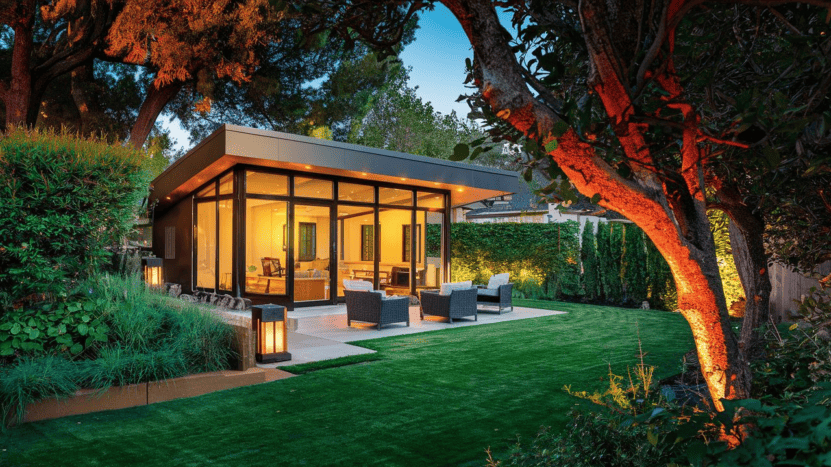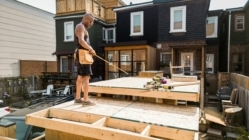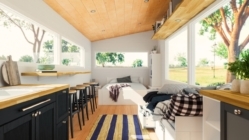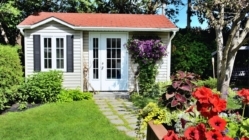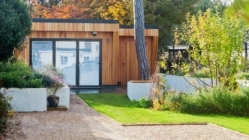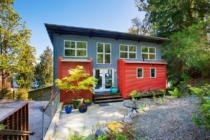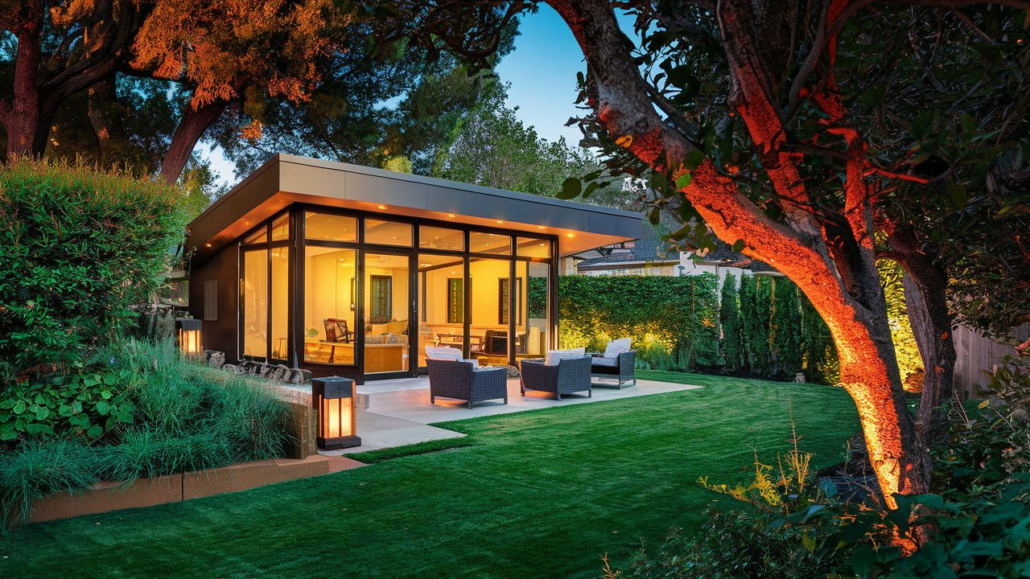
Cutest House I Ever Saw
I have been in the mortgage industry since 1994 and have seen thousands of homes in every setting imaginable.
And the cutest house I have ever seen was a 3,500 square foot brick, single-level ranch house on ten acres in the wine-growing region of Livermore Valley in California.
It had flowered walkways, a veranda overlooking the valley, and a rolling oak setting that looked like a movie set.
And – it was just one of two guest houses (the other was identical) on a huge estate with a 10,000 square foot primary dwelling.
It was the ultimate example of a perfect “ADU” or in-law unit, and it was part of a woman’s “dream estate” with literally every known amenity (vineyards, home theater, gardens, swimming pools, game rooms, extra garages, barns, horse facilities, sport courts, putting greens, etc.).
A few interesting asides:
- OWNER: The owner of the property was a brilliant woman with an extremely successful contracting business. The state required a certain percentage of all contracts to be awarded to women at the time, and she did an amazing job of winning as many bids as she wanted. She was one of those super talented and charismatic people that everyone wants to be around and who would have been similarly successful no matter what she did.
- APPRAISAL: To appraise an estate like that, the appraiser had to travel over 25 miles in all directions to find similar “estates” to use as comparable sales.
- OWNER SOLD AFTER TWO YEARS: The owner didn’t stay in her “dream home.” It turns out buying perfection with every amenity requires an enormous amount of maintenance, money and time (even if you have a large staff to help). This is something I have seen time and again over the years.
- FUNCTIONAL OBSOLESCENCE: This was years ago, but the property appraised for less than it cost to build at the time because the market for such an estate was so limited. This is another great example of “functional obsolescence” (it was an “overbuild” to say the least) in the appraisal realm.
OK – that was a ridiculously long segue into the topic at hand – financing an ADU (Accessory Dwelling Unit).
It was also a reminder to everyone to not go overboard if they plan on building an ADU. 😊
ADU Financing Options
Anyway, below are four options for financing an ADU:
1. Home Equity Line of Credit (HELOC)
A HELOC is a large credit line secured by the equity in your home. Equity is the portion of your home’s value you own outright. Ato funds is flexible – you can borrow as much or as little as needed, when needed, and you can pay down your balance and re-borrow funds over and over. HELOCs have adjustable rates and can be obtained with very few or no costs at all.
Pros:
· Low cost and low interest rates compared to other 2nd mortgage options.
· Payments can be “interest only” against only the amount withdrawn/borrowed.
· No required contractor bids or information related to your ADU project.
Cons:
· Your home acts as collateral, meaning you could lose it if you default on payments.
· Variable interest rates mean they can increase at any time.
· The available credit line might not be large enough to cover the full ADU cost.
2. Cash-Out Mortgage
A cash-out mortgage loan refinances your existing mortgage, replacing it with a larger loan. The difference between the new mortgage and the previous one is the “cash out”, and it can be used to fund your ADU construction.
Pros:
· Fixed interest rates offer security and consistent payments.
· Lower interest rates than an unsecured loan or a 2nd mortgage might offer.
· No contractor bids or details about your ADU project are necessary for funding.
Cons:
· Interest begins accruing immediately on the entire loan balance (in contrast to a HELOC that allows you to borrow when you need the funds).
· Refinancing could result in a higher interest rate than your current mortgage has.
· Refinance could extend your mortgage repayment term, adding years to your overall debt.
3. Fannie Mae HomeStyle Renovation Loan
Designed for major renovation projects, the Fannie Mae HomeStyle Renovation Loan bundles the cost of both the ADU and your new home into a single loan. These loans can also be used in conjunction with a refinance. This is a construction loan of sorts where borrowers get approved for a loan that is large enough to cover all of the costs associated with ADU construction. The appraisal will be done on a “Subject To” basis, meaning the appraiser will appraise the property as if the ADU has already been constructed. Because of this, the appraiser will need to see the plans and specifications for the ADU when she appraises the property. Underwriters will also need to see the plans, specifications and bids from a licensed and approved contractor before the loan is approved. A huge advantage of these loans is that they lend up to 97% loan-to-value.
Pros:
· Fixed interest rate provides security and consistent payments.
· The loans usually provide enough funds to cover the entire cost of the ADU construction project.
· Can be used for either purchasing a home or refinancing your current one.
· Financing is available up to 97% loan-to-value based on the future value of the property – making this option exceptionally advantageous for borrowers with limited cash.
Cons:
· Complexity of financing requires more time to close.
· Detailed plans and contractor bids are required before the loan is approved or funds distributed.
· Funds are distributed via a “draw system” and not all at once, limited contractors to a specific schedule.
4. Freddie Mac ChoiceRenovation Loan
Very similar to Fannie Mae’s HomeStyle loan, the Freddie Mac ChoiceRenovation Loan integrates ADU funding into your home purchase or refinance. Like Fannie’s offering, this too is a construction loan of sorts where borrowers get approved for a loan that is large enough to cover all of the costs associated with ADU construction. The appraisal will be done on a “Subject To” basis, meaning the appraiser will appraise the property as if the ADU has already been constructed. Because of this, the appraiser will need to see the plans and specifications for the ADU when she appraises the property. Underwriters will also need to see the plans, specifications and bids from a licensed and approved contractor before the loan is approved. A huge advantage of these loans is that they lend up to 97% loan-to-value.
Pros:
· Can use the rents from ADU to help qualify – something Fannie Mae does not allow.
· Fixed interest rate provides security and consistent payments.
· The loans usually provide enough funds to cover the entire cost of the ADU construction project.
· Can be used for either purchasing a home or refinancing your current one.
· Financing is available up to 97% loan-to-value based on the future value of the property – making this option exceptionally advantageous for borrowers with limited cash.
Cons:
· Complexity of financing requires more time to close.
· Detailed plans and contractor bids are required before the loan is approved or funds distributed.
· Funds are distributed via a “draw system” and not all at once, limited contractors to a specific schedule.
Valuing An ADU
While this blog is about financing the construction of new ADUs, I encourage everyone to also read this blog about valuing an ADU.
ADU Experience – The Prefab Guys
Our office used to be next to a company that sold precut or prefab ADUs (https://www.caprecut.com/)
I like prefab offerings like these because of how much less expensive and more efficient they can be.
But, what most impressed me with the experienced prefab guys was how well they knew the local zoning and permitting requirements, and how quickly they could navigate them.
This is because I saw lots of “do-it-yourselfers” get hung up with permitting issues and/or end up with “glorified sheds” that could not even be considered dwelling space in the end and that added minimal value to the property.
So – if anyone is building an ADU, this is a reminder to make sure their builder (or someone advising them) has experience in the realm.

